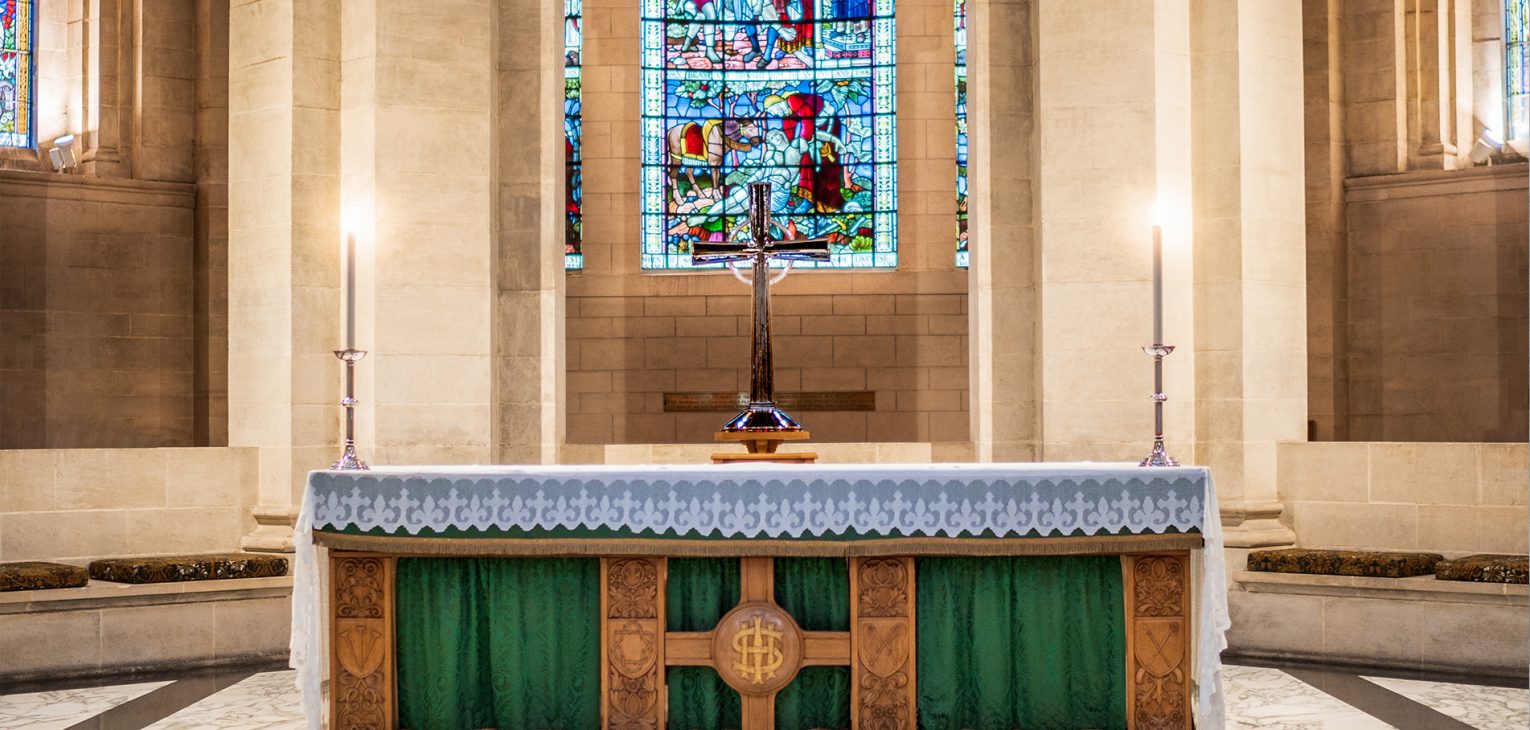St Anne’s Cathedral narrowly avoided damage during the Belfast Blitz of spring 1941, as German bombers targeted the city’s factories and shipyards.
Cathedrals in other cities were less fortunate. Only months earlier, in November 1940, the 600-year-old cathedral in the centre of Coventry, in the West Midlands, had been reduced to ruins by German bombers.
The morning after the bombing, a priest – the Rev Arthur Wales walked through the rubble of Coventry Cathedral and came across several large, medieval carpenters’ nails that had come down with the beams from the roof. He picked up three and with some wire, bound them together in the shape of a cross. Later he had the nails welded and plated. This was the first Cross of Nails and it came to stand for both suffering and the hope of survival.
Over 100 more crosses were made in the course of the following years, all with nails salvaged from the rubble. They were given as symbols of peace and reconciliation to other cathedrals and churches and also to prisons and schools. Together these places form a group known as the Community of the Cross of Nails. Poignantly, some of the very first Crosses of Nails were given to cathedrals in Dresden, Berlin and Kiel, German cities damaged by Allied bombing. These gifts represented a new partnership of peace and trust between the cities and Coventry.
In 1958, whilst at the Lambeth Conference, Bishop Cyril accepted one of the crosses for St Anne’s. The nails are 600-years-old, making the Cross of Nails the oldest object in this cathedral.

